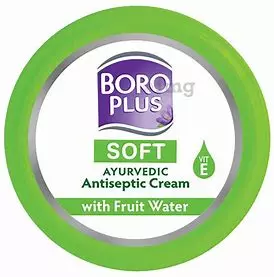of Allahabad High Court The court upheld the Commercial Tax Tribunal, Lucknow, in holding that Boro Plus Ayurvedic Cream is a “medicated ointment” and not an “antiseptic cream”. It held that Boro Plus Ayurvedic Cream is taxable at 5% under Section 41 of Schedule II of the Uttar Pradesh Value Added Tax Act, 2008.
The heading “Drugs” in Section 41, effective from 11 October 2012, will be: Exclusion Medicated soap, shampoo, disinfectant cream, face cream, massage cream, eye gel, hair oil, etc. What’s Included Vaccines, Syringes & Bandages, Medicated Ointments, IP Grade Light Liquid Paraffin, Tulan, Homeopathic Medical Sugar Tablets, Human Blood Components, CAPD Fluid, Cyclosporine.
Judge Shekhar B. Saraf “Antiseptic creams are excluded from entry 41, but medicated ointments are included because of the use of the word “but.” The word “but” clearly indicates that the legislator intended to include medicated ointments as an exception, even though certain medicated ointments may be classified as antiseptic creams. If a product qualifies as a medicated ointment and not merely an antiseptic cream, it will be included in entry 41.”
Background and issues surrounding the incident
Boroplus Antiseptic Cream (BPAC) was classified as an “Unclassified Item” by the Assessing Authority and taxed at the rate of 14%. The defendant M/s Emami Ltd. appealed against the order of the Assessing Authority but was dismissed. An appeal was subsequently filed before the Commercial Tax Tribunal which held that Boroplus Antiseptic Cream is a “medicinal ointment” and therefore taxable at the rate of 5% as a “medicinal drug” under Entry 41 Schedule II.
Challenging the court order, the authorities argued that BPAC has long been recognised as a cosmetic product and has been assessed accordingly. However, the court had earlier considered BPAC to be a drug. It was stated that antiseptic cream has been excluded from the 41 items of “drugs” in Appendix II vide order dated 1.11.2011 and hence BPAC cannot be classified as a cosmetic product.Number Effective October 2012, BPACs are taxable as unclassified items.
The assessee, despite seeking to have its product evaluated as a medicated ointment, referred BPAC toNo.1 Disinfectant Cream in India” The tax department’s lawyers argued that BPAC is purchased without a prescription, whereas medicated ointments require a doctor’s prescription, and therefore, BPAC is an antiseptic cream subject to tax at 14% as an “unclassified item”.
Emami, the counsel for the defendants, argued that BPAC is an Ayurvedic drug ointment under a drug license issued by the Drugs Licensing Authority under the provisions of the Drugs and Cosmetics Act, 1940 and the Drugs Rules, 1945. The change on the 11th wasNumber In October 2012, antiseptic creams were excluded, but medicated ointments, which are BPAC, were included.
High Court ruling
The Court held that Section 41 classifies products based on their medical properties and uses and provides tax benefits to products with medical properties.
The use of “but” in the entries is intentional to include items that were not previously part of the entry.
“But” appears in Entry 41 alongside terms such as “expect,” “nevertheless,” and “however,” indicating an exception to the list of exclusions preceding the same term..”
The Court found that the Tribunal was justified in classifying BPAC as a “medicated ointment” because the legislature specifically chose to include “medicated ointments” in section 41. It held that antiseptic creams are clearly excluded from section 41 since medicated soaps, shampoos, face creams and massage creams are all cosmetic products and are included in section 41.
The Tribunal noted that although BPAC had been classified as an antiseptic cream by the Tribunal’s technical consultants, a closer examination of the ingredients in BPAC revealed that it not only possessed the properties of an antiseptic cream, but also properties more closely related to those of a medicated ointment.
“BPAC has the power to soothe, heal, and protect the skin from a variety of ailments, proving that its formulation is intended for more than just antiseptic purposes. By hydrating, reducing inflammation, and promoting healing, BPAC acts similarly to a medicated ointment addressing chronic skin issues and overall skin health..”
The court found that the decedent had clearly proved before the Tribunal that BPAC was a medicinal ointment and therefore fell within Section 41, which was taxable. The onus was on the Tax Office to disprove the decedent’s argument, which the Tax Office failed to do. Contrary to the materials submitted by the decedent, the Tax Office was found to have failed to submit materials showing that BPAC was an “antiseptic cream” and therefore excluded from Section 41.
The court ruled that when ministries seek to reclassify products, they must provide concrete evidence, such as expert opinion, industry standards, etc., to justify the reclassification. If the ministries fail to provide any evidence, the reclassification is ruled to be legally improper.
Justice Saraf noted that the Tribunal is the final fact-finding authority and the scope of the High Court’s interference with review jurisdiction is limited, and upheld the Tribunal’s order classifying Boroplus antiseptic cream as a medicinal ointment under Schedule 41 of the Uttar Pradesh Value Added Tax Act, 2008.
Case Title: Director of Commercial Taxes V. M/S Emami Ltd. [SALES/TRADE TAX REVISION No. – 274 of 2018]
Revisionist Lawyer: Manish Goyal, Additional Attorney General, Bipin Kumar Pandey
Attorney for the decedent: Senior Advocate SK Bagaria, assisted by Kumar Ajit Singh and Rahul Agarwal.
Click here to read/download the order
